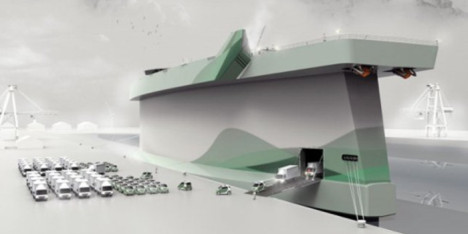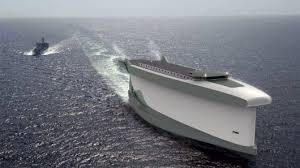January 17, 2015 – One of my readers sent me a link to a CNN news item about a ship design that incorporates an airfoil. Called the Vindskip ™, which translates to windship, the entire structure acts like a sail. The propulsion system includes a hybrid electric-liquid natural gas (LNG) power plant supplemented by the hull’s shape, a symmetrical air foil to generate aerodynamic lift.
The ship’s internal computer systems track meteorological data to calculate the best route to take advantage of available wind. Initially the hybrid electric-LNG engine gets the vessel moving. Once it reaches desired speed the air foil generates pull. Then the computer system combines air foil and electric-LNG hybrid propulsion, and adjusts pitch and rotation rate on the propellers to maintain an optimal cruise control speed. For ship operators the designers estimate fuel savings of 60% with reduction in emissions of 80%.
The designer is the Norwegian company, LadeAs. It hopes to build both container and passenger vessels with its innovative, eco-friendly concept and has applied for a patent on the airfoil design and computer control system.
A number of ship designers are experimenting with wind. Oshima Shipbuilding out of Japan has developed a design for a bulk carrier with 9 rigid telescoping sails. Fairtransport, out of the Netherlands, has on its drawing boards the Ecoliner, a 130 meter, 8,000 ton ship featuring 4 masts with telescoping rigid air foils. And B9 Energy Group, out of the United Kingdom, has on its drawing boards a 3-masted automated square rig sail system concept.
All of these other concepts are reinventions of the old square rigger clipper ships of the 19th century. In these the innovation comes from the automation of the hoisting and positioning of the sails, the use of materials and the computer control systems that optimize wind energy use.
LadeAs is, however, the first to incorporate airfoil design directly into the hull and not resting on top of the superstructure. Learn more about the advantages of Vindskip’s design and why it is the right solution for ships going forward by watching the Youtube video.












